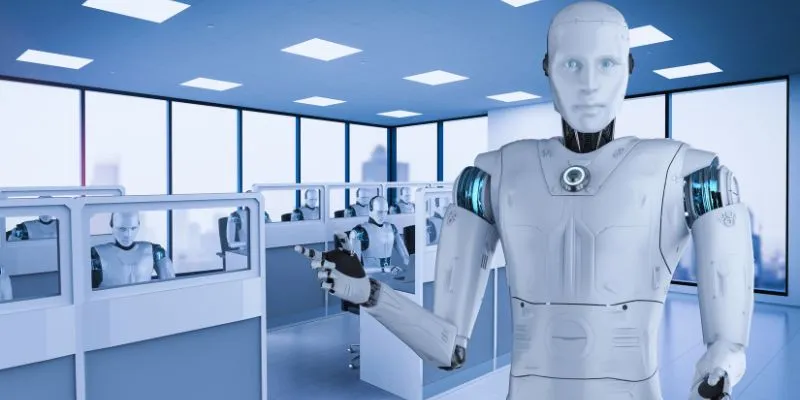Technology advances so seamlessly that we often don’t notice the shifts—until something revolutionary changes how we interact with the digital world. Cloud computing has already transformed data storage, processing, and accessibility, but it no longer operates in isolation. Enter Edge AI , a breakthrough that processes information directly on devices, reducing lag and boosting efficiency.
Rather than relying entirely on cloud servers, Edge AI provides instant decision-making at the edge where data is being generated. This integration is transforming sectors and driving innovation in smart homes, autonomous vehicles, and industrial automation. To understand what technology is approaching, one must realize how cloud computing and Edge AI go hand-in-hand.
The Role of Cloud Computing
Cloud computing is the backbone of modern digital services, offering transparent access to data and applications via the Internet instead of local storage. It provides scalable computing power, storage, and software resources without the need for businesses or individuals to own physical infrastructure. This feature helps companies scale efficiently, store vast data sets, and execute complex applications while keeping infrastructure expenses low.
Flexibility is one of cloud computing’s biggest strengths. Organizations can easily scale their resources up and down, paying only for what they consume. This model benefits startups and large corporations alike, eliminating the need for significant upfront investments in IT infrastructure. Cloud computing also enhances collaboration, enabling teams to access and share files remotely from any location with an Internet connection.
Security is always a top concern with cloud computing because sensitive information is stored remotely. Providers implement measures such as encryption, access controls, and security protocols to safeguard data. However, customers also need to adhere to best practices like robust authentication and regular backups. Despite these challenges, cloud computing remains essential for everything from routine file storage to enterprise-level solutions.
What Is Edge AI and Why Does It Matter?
Edge AI brings artificial intelligence to the network’s edge, processing data closer to where it’s created. Instead of sending every piece of data to cloud servers for analysis, Edge AI enables devices like smartphones, security cameras, and factory sensors to process data locally. This reduces latency as decisions are made almost instantly, without relying on a distant server.

For example, self-driving cars rely on Edge AI to make real-time decisions about speed, navigation, and obstacle detection. If the car had to send data to the cloud and wait for a response, it would be too slow to react to immediate hazards. Instead, Edge AI ensures that critical decisions happen on the spot, improving safety and efficiency.
In industries like healthcare, Edge AI is revolutionizing patient monitoring. Wearable devices with built-in intelligence can analyze heart rates and oxygen levels in real-time, alerting medical professionals to potential issues before they become serious. This capability reduces the reliance on continuous Internet connectivity and ensures faster response times in emergencies.
Security and privacy are also major advantages of Edge AI. Since data is processed on the device rather than transmitted to a cloud server, there is less exposure to potential cyber threats. This approach is particularly important for applications dealing with sensitive information, such as biometric authentication or financial transactions.
The Relationship Between Cloud Computing and Edge AI
Cloud computing and Edge AI are not competing technologies; instead, they complement each other, creating a more efficient and intelligent digital ecosystem. While cloud computing provides vast storage and computational power, Edge AI processes data locally, reducing delays and improving real-time decision-making. Together, they enable faster insights, enhanced security, and improved efficiency across industries.
How Edge AI and Cloud Computing Work Together
Edge AI enhances real-time decision-making by processing data locally, reducing latency. Cloud computing, however, remains essential for storing vast datasets and enabling large-scale analytics. Autonomous vehicles use Edge AI to make immediate driving decisions while relying on the cloud for long-term improvements. Similarly, voice assistants use Edge AI for quick responses but depend on cloud computing to learn from user interactions and refine accuracy over time.
Balancing Speed and Scalability
Integrating Edge AI with cloud computing ensures a balance between speed and scalability. Edge AI enables rapid data processing at the source, reducing delays in industries like healthcare and manufacturing. Cloud computing, meanwhile, provides the infrastructure for storing and analyzing long-term data. This synergy allows businesses to process critical information in real time while leveraging cloud resources to refine predictive analytics, improve automation, and enhance operational efficiency.
Security and Privacy Considerations

Edge AI improves security by processing sensitive data locally, minimizing exposure to cyber threats. This is crucial in finance, healthcare, and cybersecurity, where privacy is a top concern. Cloud computing ensures data protection through encryption, secure access controls, and compliance measures. The combination of Edge AI and cloud-based security frameworks enhances reliability, allowing organizations to manage risks effectively while maintaining seamless access to data for analysis and strategic decision- making.
The Future of Cloud Computing and Edge AI Integration
The fusion of cloud computing and Edge AI is shaping the future of technology. Businesses are adopting hybrid models where Edge AI powers real-time decision- making while cloud computing handles storage and complex data analysis. This integration is revolutionizing smart cities, healthcare, and industrial automation. As AI models become more advanced, cloud-edge collaboration will enhance efficiency, drive innovation, and ensure that digital ecosystems remain fast, intelligent, and secure.
Conclusion
Cloud computing and Edge AI are transforming the way data is processed, balancing real-time decision-making with large-scale computing power. Edge AI ensures immediate responses by processing data locally, while cloud computing provides the infrastructure for long-term storage and advanced analytics. Together, they create a more efficient, intelligent, and secure digital ecosystem. Industries, from healthcare to automotive and retail, are benefiting from this synergy, which improves speed, security, and efficiency. As technology advances, their integration will become even more seamless, driving innovation across multiple sectors. This collaboration ensures that businesses and consumers experience smarter, faster, and more responsive digital solutions.
 zfn9
zfn9























